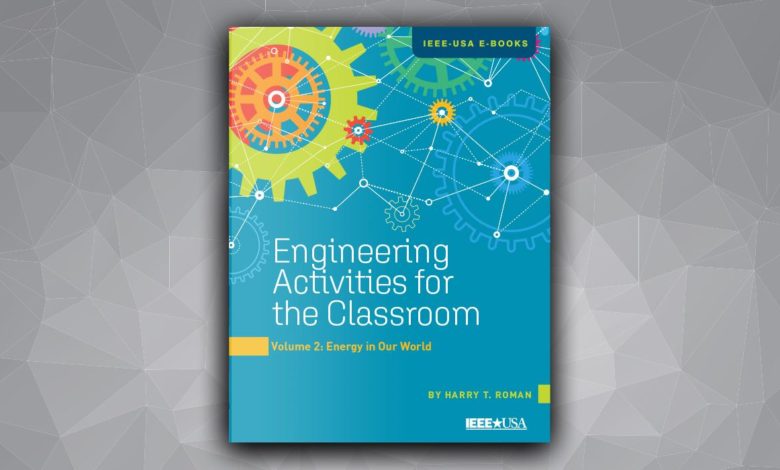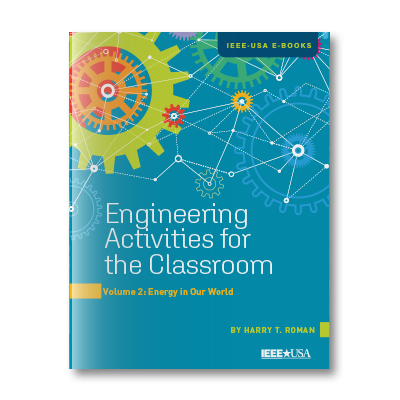

Engineering Activities for the Classroom – Vol. 2: Energy in Our World
FREE to Members
Non-Members: $2.99
Veteran educator Harry T. Roman’s exciting latest e-books offer teachers, students and parents an educational series on engineering topics of timely interest for the classroom. Teachers can use the activities in these books to develop lesson plans or assignments for students — to engage them in the classroom, or via distance learning they can do at home, with their parents, or by themselves.
In the second volume of the series, Engineering Activities for the Classroom – Volume 2: Energy in Our World, the author takes a deep dive into how energy has an impact on our world every day. Having worked 36 years with a Fortune 500 combination electric and natural gas utility, and having practiced the fine art of conducting advanced energy R&D, Roman is no stranger to the subject matter. Further, he has come to recognize how teachers perceive it from a lesson plan standpoint.
“There is no doubt the use of energy is absolutely essential to a high-tech, information-rich, globally-competitive society like ours,” Roman says, “It takes energy to communicate between our many information sources and appliances — like computers, tablets and hand-held technologies.” He notes the strong connection between the use of energy and economic growth.
The chapters and activities in this second volume include: The Basics of Energy; Personal Energy Use; Electricity Use; Solar Energy; and Design Challenges. Each section is filled with questions and activities to challenge students on many levels. For instance, in the section on energy basics, Roman explores beyond energy being merely the capacity to do work. He digs deeper — asking about its uses and applications — not through equations, but rather through placing energy use into perspective.
“Our economy runs on energy, in both our personal and commercial spheres,” Roman writes, “Just look at how the price of gasoline shifts up or down, following a world geopolitical disturbance; or after hurricanes that affect our refining capacity in the Gulf states areas.”
Roman has a particular passion for discussion and explorations about energy. While performing his formal engineering work, Roman had the good fortune of developing a corporate solar and renewable research program covering solar thermal, solar electric, photovoltaics, and wind energy applications. He also built and tested some of the first such systems in New Jersey, even launching a program to install solar thermal water heating systems in customer homes. On a related note, more than 40 years ago, Roman was able to assess the potential for onshore and offshore wind energy systems. And today, offshore-based systems are coming to fruition.
Beginning 1 August, IEEE-USA is offering Engineering Activities for the Classroom – Volume 2: Energy in Our World, free to all IEEE members. Non-members pay $2.99. The book is available at https://ieeeusa.org/shop/.
Don’t pass up this opportunity to encourage students to look at the interrelationships between energy and other aspects of our culture — such as the environment, economy, society, and the legal and cultural concerns people may have. It is a powerful way to integrate the curriculum, which in turn, will stimulate students’ creativity, and help them develop new ideas about energy in our world.
Georgia C. Stelluto is IEEE-USA’s Publishing Manager; Editor and Manager of IEEE-USA E-BOOKS; Department Editor of the InFocus section for IEEE-USA InSight; and co-editor of IEEE-USA Conference Brief.






